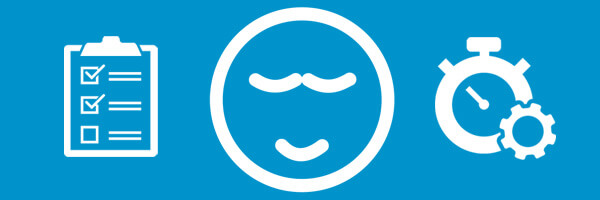We all strive to be more productive in our everyday lives. We live in a world where multi-tasking is viewed as a skill, and “being busy” is worn like a badge of honour. But being busy is not the same thing as being productive.
“Being busy means doing stuff. Being productive means getting stuff done.”
Getting Things Done, or GTD, is a system for getting organized and staying productive, by best-selling author and productivity consultant David Allen.
The GTD method is the idea of moving planned tasks and projects out of your head by jotting them down, and then breaking them into actionable items. This allows you to focus your attention on taking action – actually getting things done.
Lifehacker’s 101 series explains many life hacking basics for their readers, and in their article about Productivity 101, they detail the GTD method and how you can make it work for you.
Productivity 101: A Primer to the Getting Things Done (GTD) Philosophy
Put simply, GTD is a method for organizing your to-dos, priorities, and your schedule in a way that makes them all manageable. One of GTD’s biggest benefits is that it makes it easy to see what you have on your plate and choose what to work on next. It also has a strong emphasis on getting your to-dos out of your head and into a system you can refer to. This clears your mind of any mental distractions that will keep you from working efficiently.
The FIVE Pillars of Getting Things Done
1. Capture everything. Your to-dos, your ideas, your recurring tasks, everything. Put it in a pen-and-paper notebook, a to-do app, a planner, whatever you prefer to use to get organized. GTD doesn’t say to use a specific tool, but whatever you use has to fit into your normal flow. The barrier to using it should be so low that there’s never a reason for you to say “I’ll add it to my list later.” You want to capture everything as soon as it happens so you don’t have to think about it again until it’s time to do it.2. Clarify the things you have to do. Don’t just write down “Plan vacation,” break it down into actionable steps so there’s no barrier to just doing the task. If there’s anything you can do right away and have time to do, get it done. If there’s anything you can delegate, delegate it.
3. Organize those actionable items by category and priority. Assign due dates where you can, and set reminders so you follow up on them. Pay special attention to each item’s priority, as well. You’re not actually doing any of the items on your list right now, you’re just making sure they’re in the right buckets for later, and your reminders are set. In short, this is quality time with your to-do list, inbox, and calendar.
4. Reflect on your to-do list. First, look over your to-dos to see what your next action should be. This is where the clarifying step pays off, because you should be able to pick something you have the time and the energy to do right away. If you see something that’s so vague that you know you won’t be able to just pick up and run with it, break it down. Second, give your to-do list an in-depth review periodically to see where you’re making progress, where you need to adjust your priorities, and determine how the system is working for you.
5. Engage and get to work. Choose your next action and get to it. Your system is, as this point, set up to make figuring that out easy. Your to-dos are organized by priority and placed in categories. You know what to work on, and when. They’re broken into manageable, bite-sized chunks that are easy to start. It’s time to get to work.
Kitovu is a cloud-based CRM and Task Management system that allows you to connect from anywhere, on any device. It helps improve your team productivity by centralising task collaboration and allows you to easily delegate tasks to different team members and monitor the progress and conversations around the tasks.
Sign up today for a free account to see what your team can achieve.

